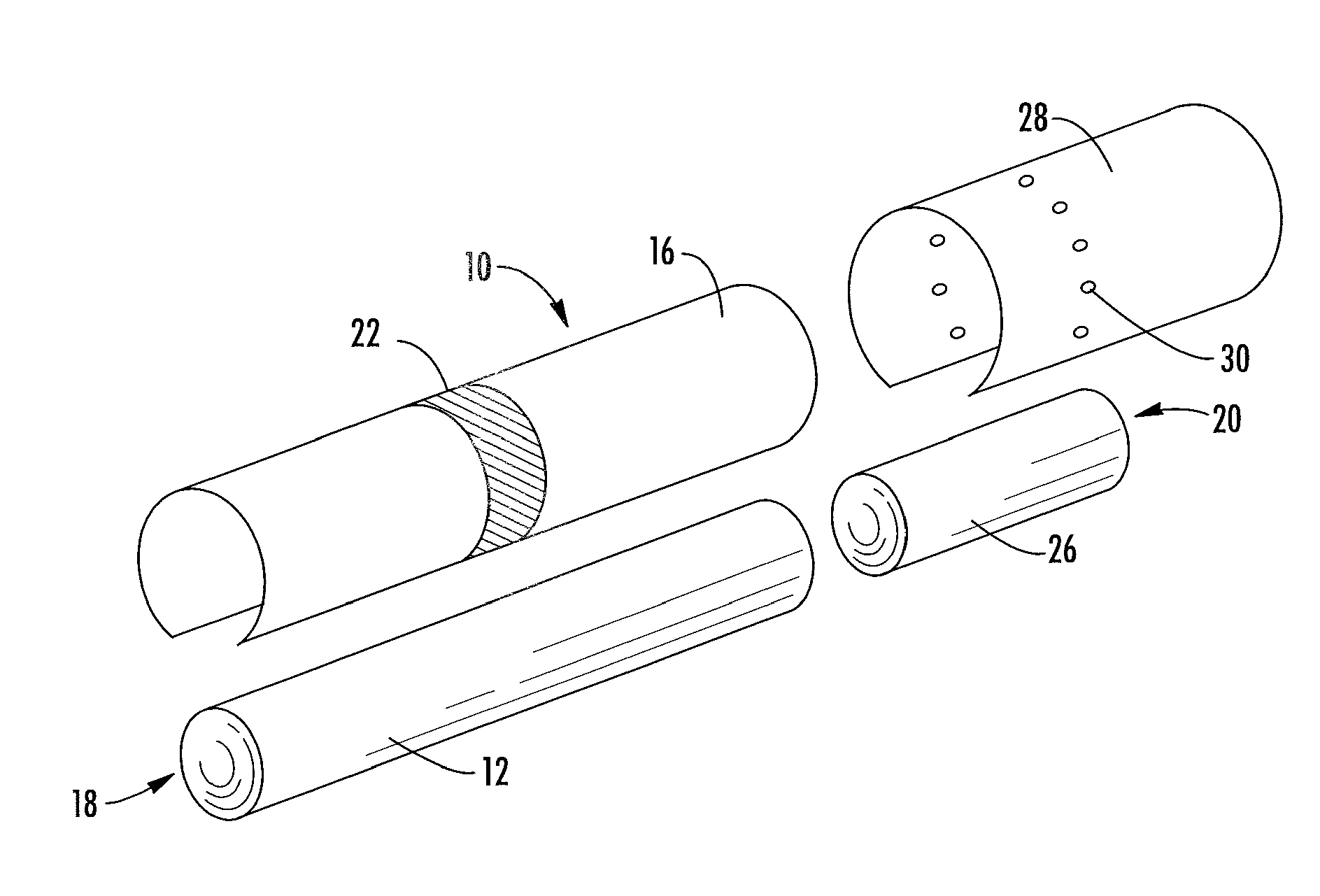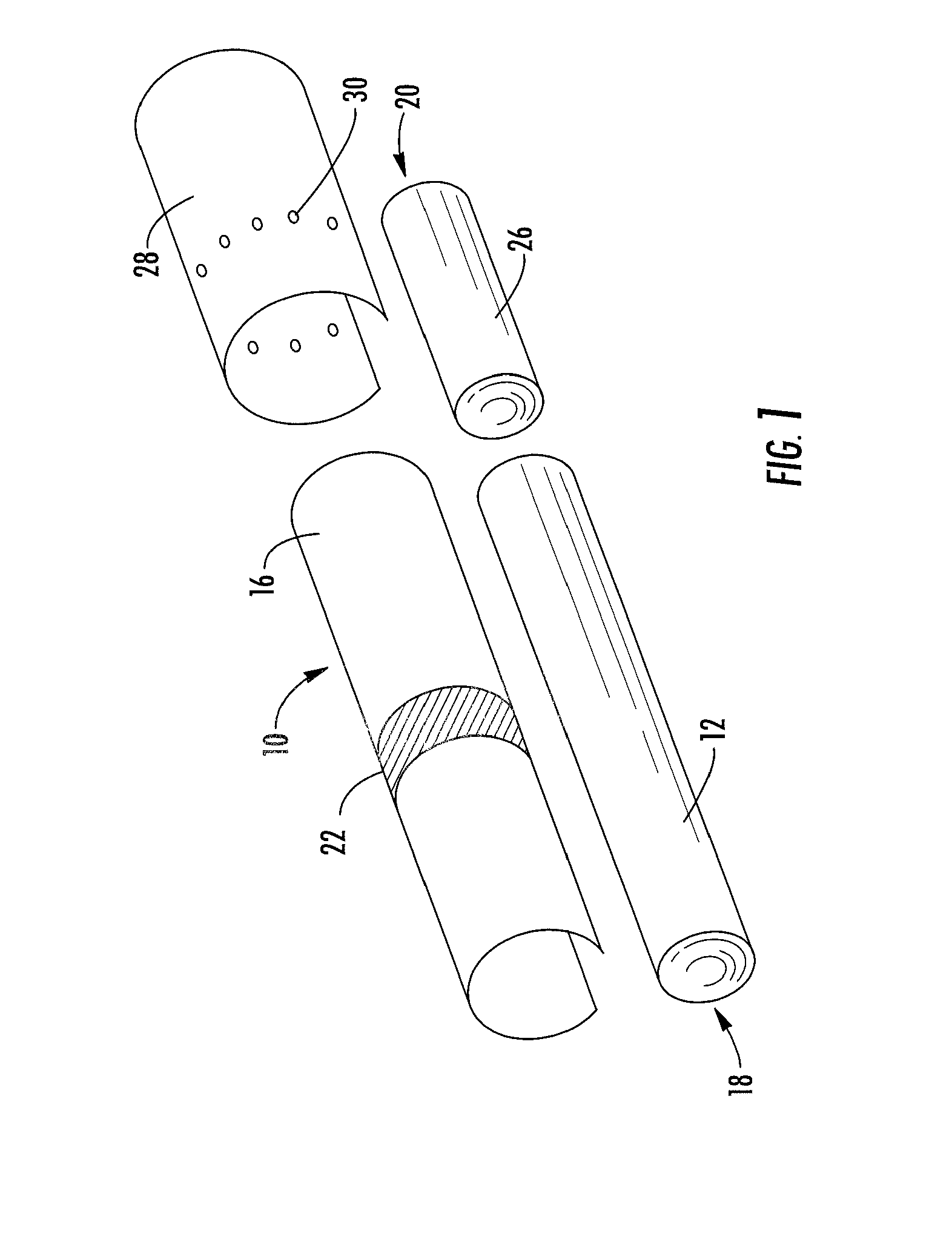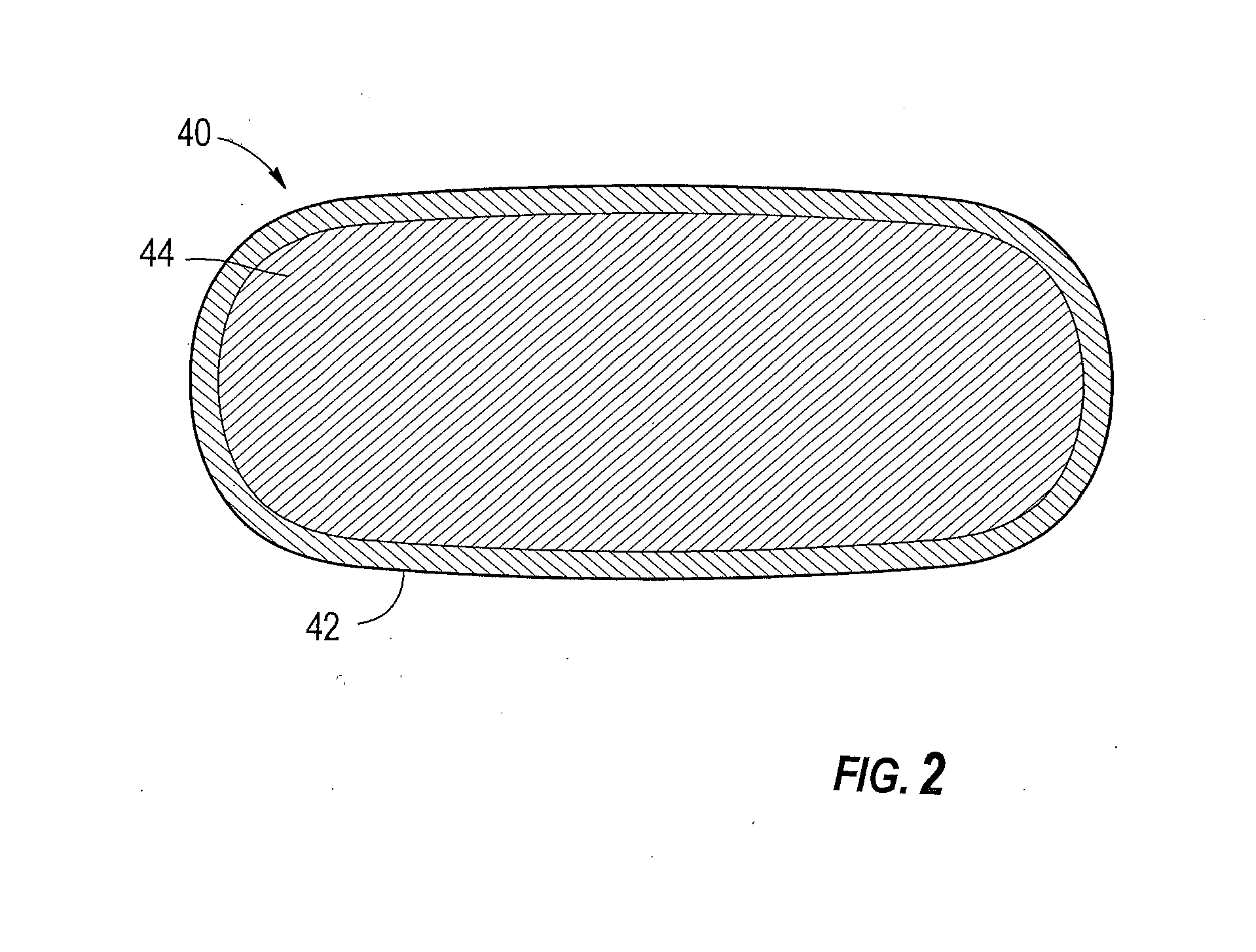Method for treating plants with probiotics
a technology for plants and probiotics, applied in tobacco smoke filtering, cigar manufacturing, fermentation, etc., to achieve the effect of reducing the content of asparagin
- Summary
- Abstract
- Description
- Claims
- Application Information
AI Technical Summary
Benefits of technology
Problems solved by technology
Method used
Image
Examples
example 1
Evaluation of Burley Tobacco Following Treatment with Probiotic Bacteria
[0055]Burley tobacco is treated prior to harvest with solutions containing probiotic bacteria, available over the counter as a digestive support product. Ten live burley tobacco plants are treated with one gallon of solution containing 60×109 live bacteria cells per gallon (“Senior Probiotic,” from CVS / Pharmacy®, comprising bifidobacterium bifidum, bifidobacterium breve, bifidobacterium longum, lactobacillus acidophilus, lactobacillus casei, lactobacillus helveticus, lactobacillus rhamnosus, lactobacillus plantarum, lactococcus lactis, and streptococcus thermophilus). Ten additional live burley tobacco plants are treated with one gallon of solution containing 60×109 live bacteria cells per gallon (“Super Probiotic,” from Walgreens, comprising lactobacillus acidophilus and bifidobacterium lactis).
[0056]The treated burley tobacco is harvested and subjected to curing in standard conditions. The tobacco is stalk cut...
example 2
Evaluation of TSNAs in Burley Tobacco Following Treatment with Probiotic Bacteria
[0059]Burley tobacco plants are treated with two different probiotic solutions, harvested, and cured as described in Example 1. About 15 g of leaf from the middle of the plant are ground and analyzed for tobacco-specific nitrosamines (TSNAs). As compared with the control, tobacco treated with “Super Probiotic” from Walgreens contains 95% NAT and 70% NNN. As compared with a control (untreated) tobacco, tobacco treated with Senior Probiotic from CVS / Pharmacy® contains 57% NAT and 43% NNN.
example 3
Evaluation of Acrylamide Content in Mainstream Smoke Produced by Burley Tobacco Following Treatment with Probiotic Bacteria
[0060]Burley tobacco plants are treated with two different probiotic solutions, harvested, and cured as described in Example 1. A portion of the middle stalk leaves of the treated tobacco plants are cut and made into cigarettes. The cigarettes are tested using a Ceruean SM 450 smoking machine (Cerulean, Linford Wood East, MK14 6LY, United Kingdom) under ISO conditions (a 35 mL puff volume, 2 second puff, and 60 second puff interval). Smoke is collected in each run on a 44 mm Cambridge smoke pad. To analyze the acrylamide content in the smoke produced from each cigarette, the smoke pads are soaked in methanol; water is added and an internal standard solution of 2H3-acrylamide (CDN Isotopes, Ponte-Claire, Quebec H9R1H1, Canada) is added. The resulting extract is filtered and passed through an SFE cartridge (Bond Elute C18), Varian, Walnut Creek, Calif. 9 for sampl...
PUM
 Login to View More
Login to View More Abstract
Description
Claims
Application Information
 Login to View More
Login to View More - R&D
- Intellectual Property
- Life Sciences
- Materials
- Tech Scout
- Unparalleled Data Quality
- Higher Quality Content
- 60% Fewer Hallucinations
Browse by: Latest US Patents, China's latest patents, Technical Efficacy Thesaurus, Application Domain, Technology Topic, Popular Technical Reports.
© 2025 PatSnap. All rights reserved.Legal|Privacy policy|Modern Slavery Act Transparency Statement|Sitemap|About US| Contact US: help@patsnap.com



